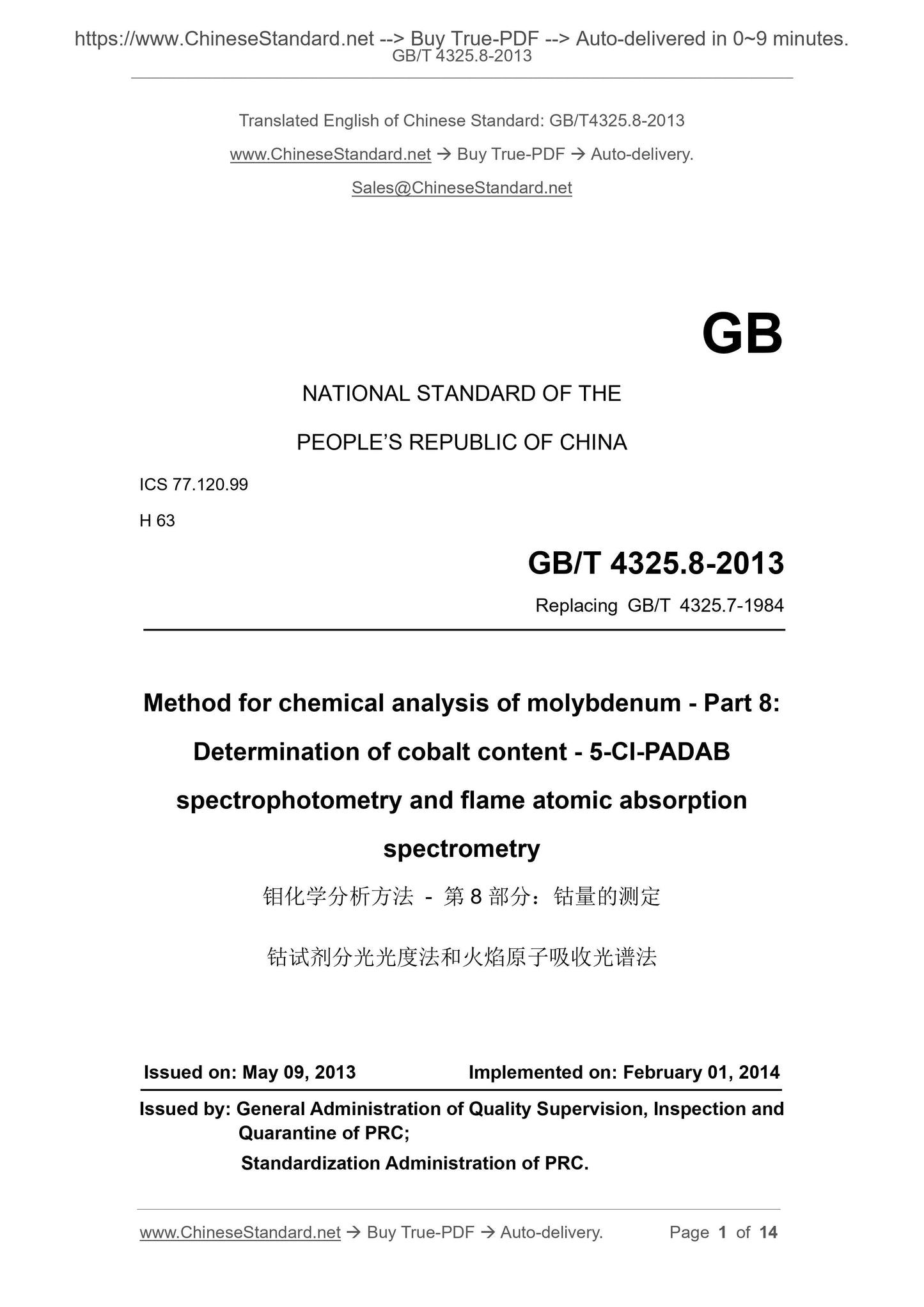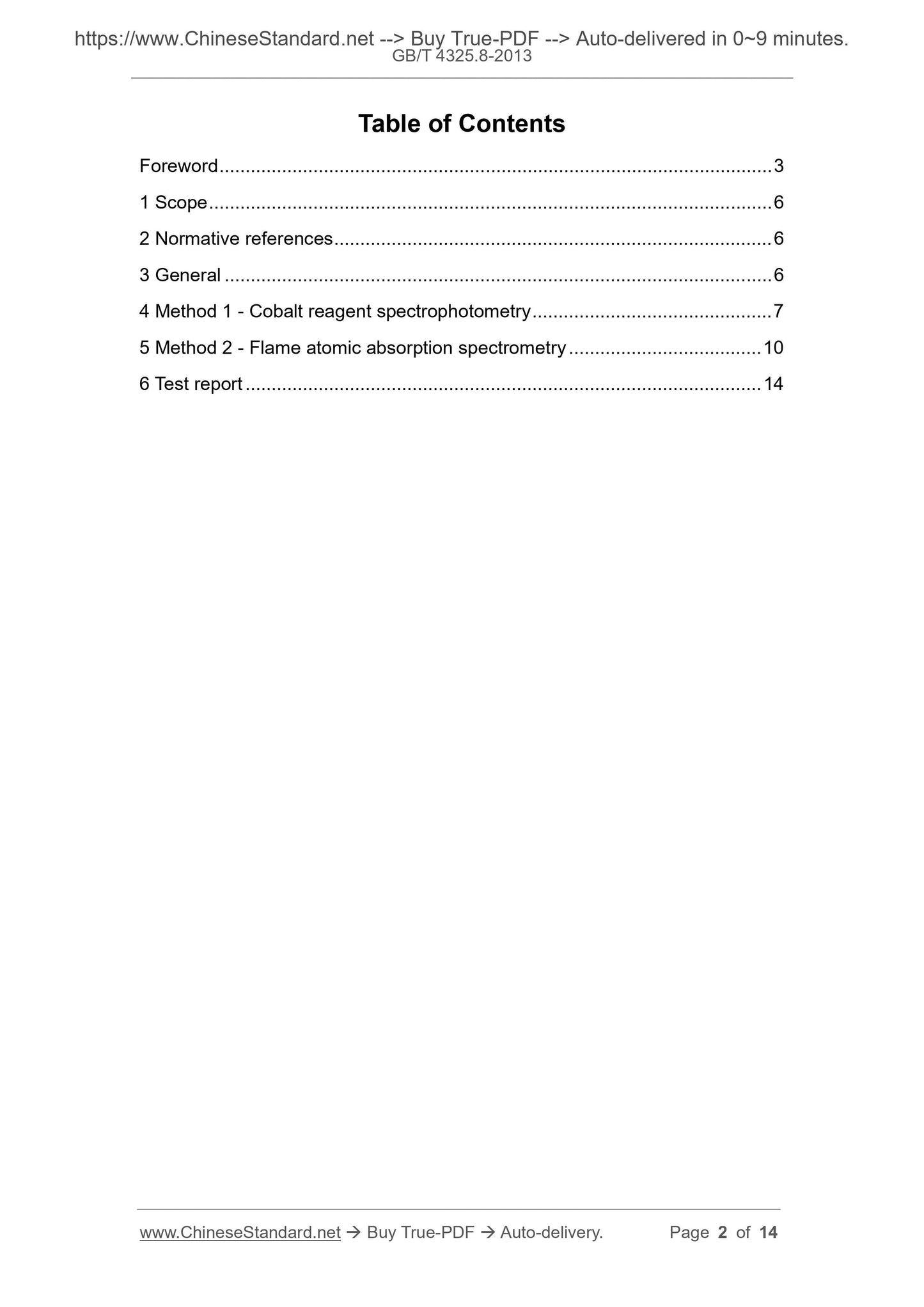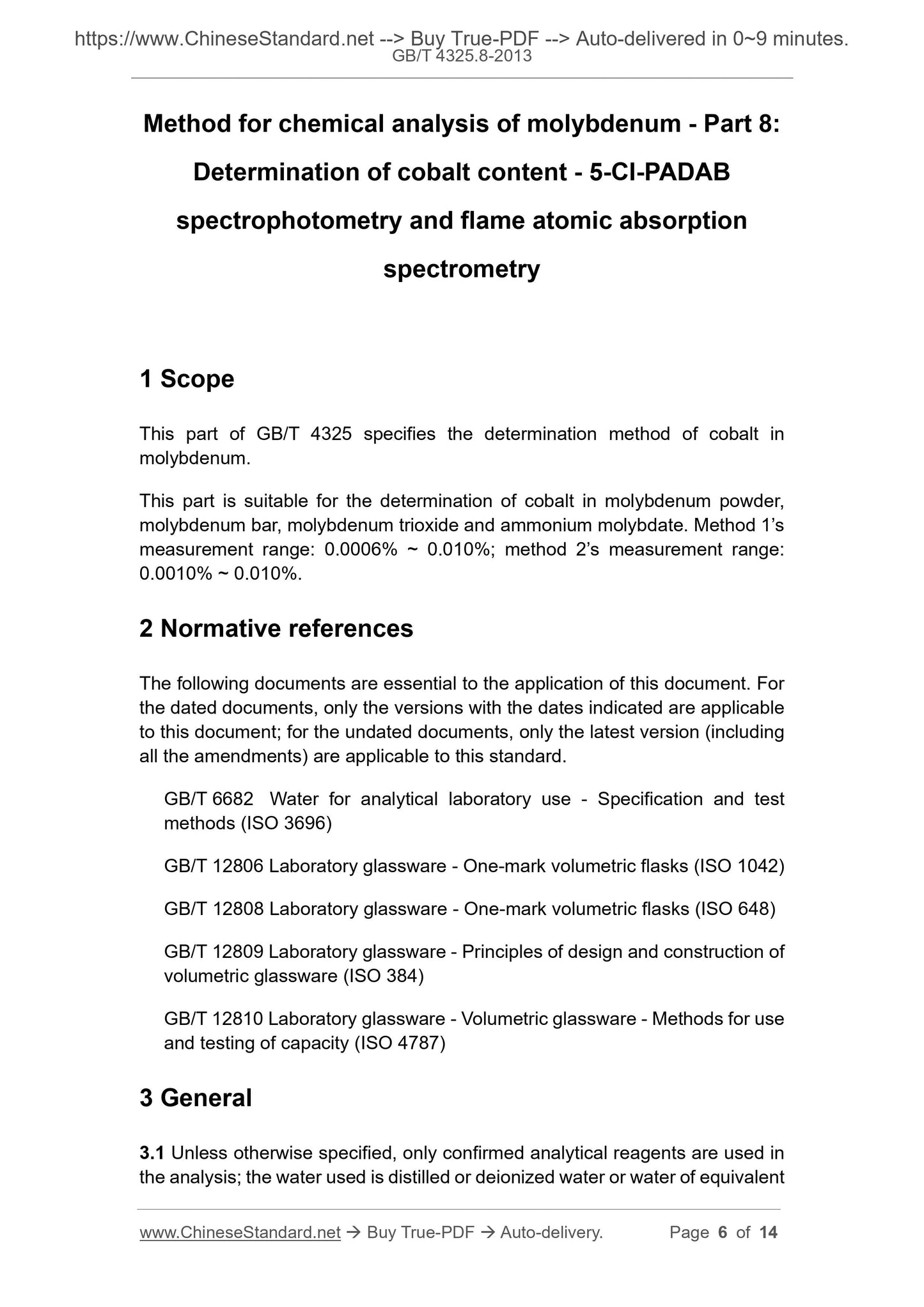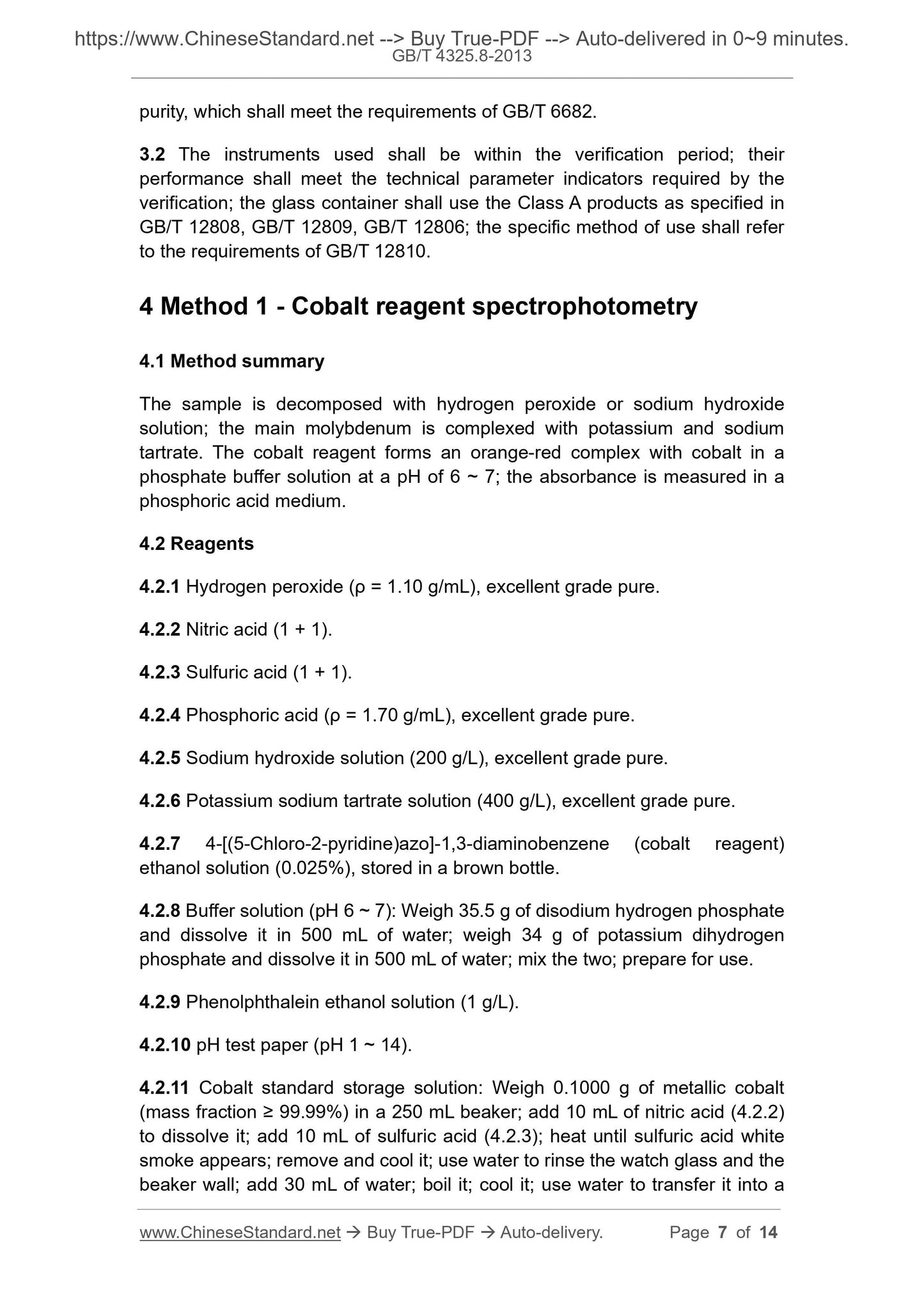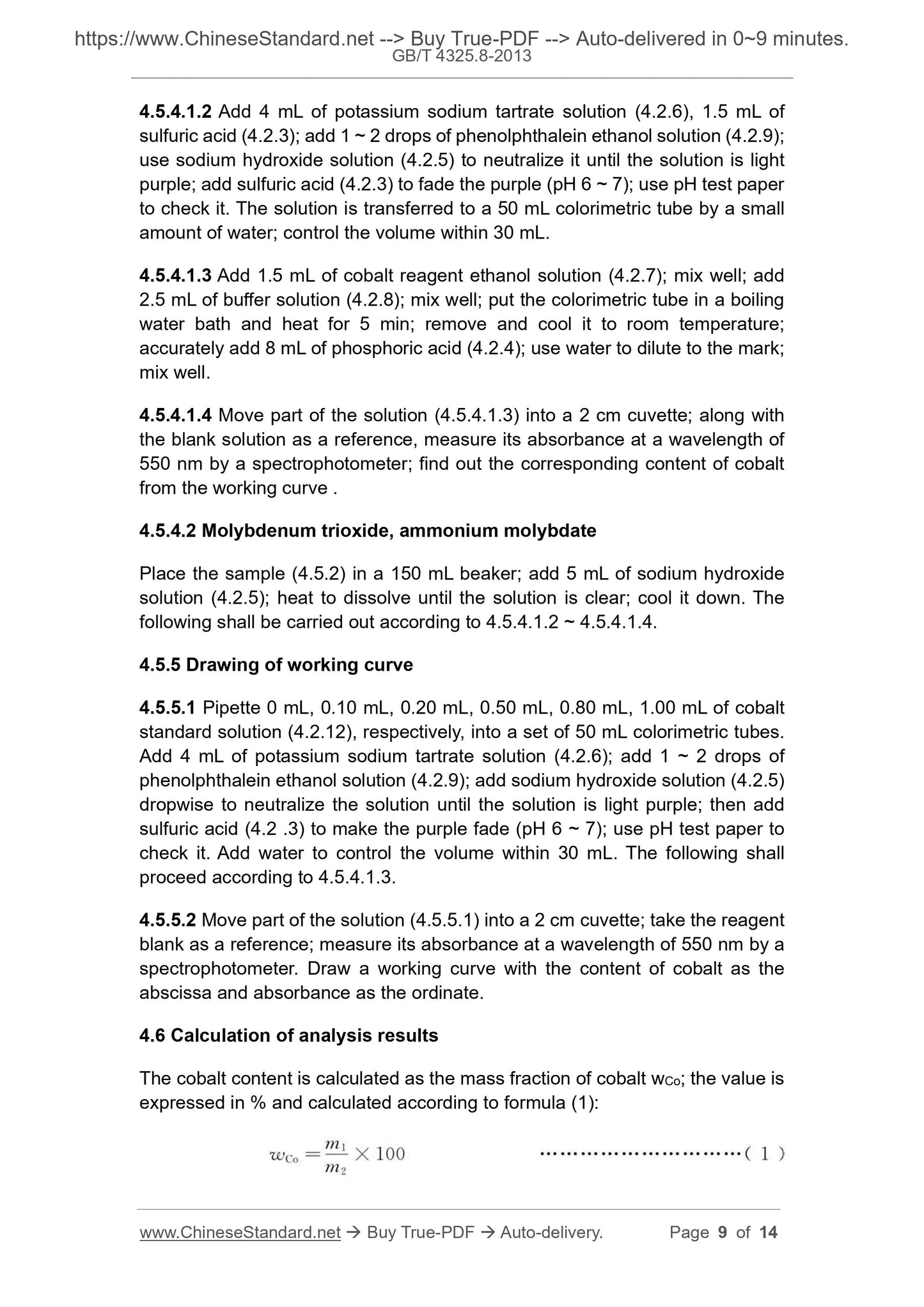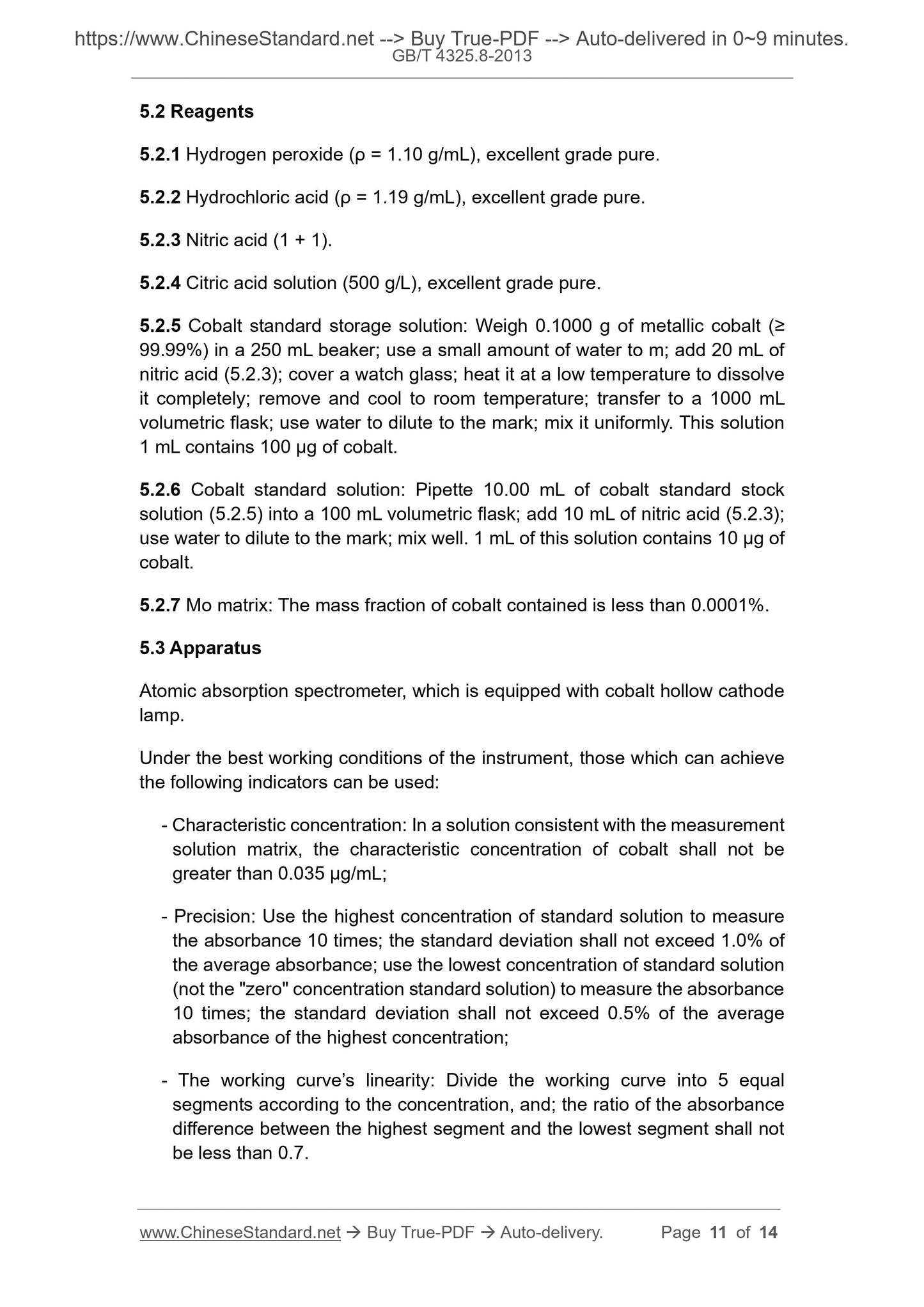1
/
of
6
www.ChineseStandard.us -- Field Test Asia Pte. Ltd.
GB/T 4325.8-2013 English PDF (GB/T4325.8-2013)
GB/T 4325.8-2013 English PDF (GB/T4325.8-2013)
Regular price
$190.00
Regular price
Sale price
$190.00
Unit price
/
per
Shipping calculated at checkout.
Couldn't load pickup availability
GB/T 4325.8-2013: Methods for chemical analysis of molybdenum - Part 8: Determination of cobalt content - 5-CI-PADAB spectrophotometry and flame atomic absorption spectrometry
Delivery: 9 seconds. Download (and Email) true-PDF + Invoice.Get Quotation: Click GB/T 4325.8-2013 (Self-service in 1-minute)
Newer / historical versions: GB/T 4325.8-2013
Preview True-PDF
Scope
This part of GB/T 4325 specifies the determination method of cobalt inmolybdenum.
This part is suitable for the determination of cobalt in molybdenum powder,
molybdenum bar, molybdenum trioxide and ammonium molybdate. Method 1’s
measurement range: 0.0006% ~ 0.010%; method 2’s measurement range:
0.0010% ~ 0.010%.
Basic Data
| Standard ID | GB/T 4325.8-2013 (GB/T4325.8-2013) |
| Description (Translated English) | Methods for chemical analysis of molybdenum - Part 8: Determination of cobalt content - 5-CI-PADAB spectrophotometry and flame atomic absorption spectrometry |
| Sector / Industry | National Standard (Recommended) |
| Classification of Chinese Standard | H63 |
| Classification of International Standard | 77.120.99 |
| Word Count Estimation | 10,197 |
| Older Standard (superseded by this standard) | GB/T 4325.7-1984 |
| Quoted Standard | GB/T 6682; GB/T 12806; GB/T 12808; GB/T 12809; GB/T 12810 |
| Regulation (derived from) | National Standards Bulletin 2013 No. 6 |
| Issuing agency(ies) | General Administration of Quality Supervision, Inspection and Quarantine of the People's Republic of China, Standardization Administration of the People's Republic of China |
| Summary | This standard specifies the amount of cobalt molybdenum determination. This section applies to molybdenum powder, molybdenum, cobalt, molybdenum trioxide and ammonium content. Method one measuring range: 0. 0006% ~ 010%, method two measuring range, 0. 001 |
Share
